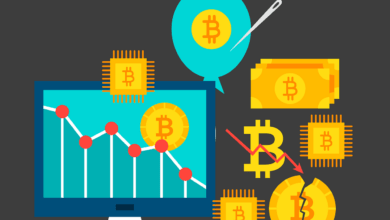Boost Your Crypto Security with 2FA

In the ever-evolving landscape of cryptocurrency, where digital currency serves as both an investment opportunity and a medium of exchange, the importance of safety cannot be overstated. As we delve into the complexities of securing our assets, it becomes imperative to recognize the critical role that dual-factor authentication (2FA) plays in safeguarding our financial interests. This mechanism is not merely an optional add-on; it is an essential protocol for anyone engaging in the world of crypto.
Comprehending the nuances of two-step verification is fundamental to protecting oneself against the myriad threats that lurk in the digital shadows. With cybercriminals continually honing their techniques, understanding this necessary safety strategy empowers users to defend their cryptocurrency holdings. Two-factor authentication serves as a formidable barrier, requiring not only a password but also a second form of identification, thereby adding an extra layer of protection that is indispensable in today’s digital environment.
In this article, we will explore the intricate workings of 2FA, illustrating how it functions as a critical protection mechanism within the realm of cryptocurrency. By grasping its significance and implementation, we can better equip ourselves to navigate the complexities of digital currency with confidence. The journey towards recognizing and adopting effective security measures begins with a thorough understanding of dual-factor authentication–a strategy that stands as a bulwark against potential threats.
Understanding Two-Factor Authentication in Crypto: A Must-Have Security Measure
In the rapidly evolving realm of cryptocurrency, security remains a paramount concern for both novice and seasoned investors. The digital currency landscape is fraught with threats, ranging from phishing attacks to sophisticated hacking techniques. Recognizing the critical role of security measures is essential for safeguarding one’s assets. Thus, comprehending the intricacies of two-factor authentication (2FA) emerges as a necessary strategy in the arsenal of protection mechanisms available to users.
Two-factor authentication operates on a simple yet effective principle: it requires not only a password and username but also something that only the user possesses, such as a mobile device or hardware token. This dual-factor authentication process significantly enhances security by adding an additional layer that malicious actors must breach before gaining access to sensitive information. In the context of cryptocurrency, where transactions are irreversible and often anonymous, grasping this verification protocol can mean the difference between preserving one’s investments and falling victim to theft.
The implementation of 2FA in cryptocurrency exchanges and wallets represents an essential safety measure that should not be overlooked. Many prominent platforms now mandate this feature as a standard practice, underscoring its critical importance in protecting user accounts. By requiring a second form of identification–whether it be a text message code, an email confirmation, or an authenticator app–users can dramatically reduce their vulnerability to unauthorized access. This understanding of two-step verification processes fosters greater confidence among investors navigating the volatile world of digital currency.
Furthermore, it is important to recognize that while 2FA significantly mitigates risks, it is not infallible. Cybercriminals continuously evolve their tactics; hence, users must remain vigilant and informed about potential threats. For instance, SMS-based 2FA can be susceptible to SIM swapping attacks. Therefore, comprehending the various methods of authentication available and selecting those that provide optimal security becomes an integral part of any cryptocurrency strategy.
As we delve deeper into the mechanics of dual-factor authentication, we must also consider user behavior and its impact on overall security. Education plays a pivotal role in fostering a culture of safety within the cryptocurrency community. Engaging users with best practices–such as avoiding public Wi-Fi when accessing financial accounts or regularly updating security settings–can fortify their defenses against potential breaches. By cultivating an environment where understanding and implementing robust verification measures is prioritized, we can collectively enhance protection across the digital currency landscape.
In conclusion, embracing two-factor authentication is not merely a recommendation but an essential component of any comprehensive security strategy in the realm of cryptocurrency. As users become more aware of the inherent risks associated with digital currency transactions, the need for effective protective measures will only intensify. By prioritizing 2FA as a fundamental verification mechanism, individuals can safeguard their financial futures amidst the complexities and uncertainties that characterize this innovative sector.
Understanding Two-Factor Authentication in Cryptocurrency: A Vital Security Measure
Two-Factor Authentication (2FA) is a security protocol that has become essential in the realm of cryptocurrency, offering an additional layer of protection beyond standard username and password combinations. By requiring two different forms of verification, it significantly reduces the likelihood of unauthorized access to digital currency accounts. The first factor typically involves something the user knows, like a password, while the second factor usually consists of something the user possesses, such as a mobile device or hardware token that generates time-sensitive codes. This dual-factor mechanism is critical for any serious investor in cryptocurrencies who seeks to safeguard their assets against increasingly sophisticated cyber threats.
Grasping the concept of two-step verification is fundamental for anyone venturing into the world of digital currencies. As the popularity of cryptocurrencies surges, so does the frequency and sophistication of hacking attempts. Understanding how 2FA operates can empower users to take necessary precautions that bolster their online security. For instance, enabling 2FA not only mitigates risks associated with stolen passwords but also ensures that even if a malicious actor gains access to your password, they would still require a secondary form of authentication to breach your account. Thus, recognizing the importance of this safety measure can be pivotal in protecting one’s financial interests in an ever-evolving digital landscape.
The implementation of 2FA serves as a critical protection mechanism against identity theft and fraudulent transactions within the cryptocurrency ecosystem. Many exchanges and wallets now mandate this security feature to create a more robust environment for trading and holding digital assets. By employing multiple layers of authentication, users are better equipped to fend off attacks that exploit single points of failure. Moreover, this strategy not only enhances individual security but also contributes positively to the overall integrity and trustworthiness of the cryptocurrency ecosystem as a whole.
Comprehending dual-factor authentication is not merely an academic exercise; it is a necessary strategy for safeguarding your cryptocurrency investments. In practice, 2FA can take several forms, including SMS-based codes, authenticator apps, and biometric verification methods such as fingerprint scanning. Each method has its advantages and drawbacks, but all serve to reinforce security by making unauthorized access exceedingly difficult. For example, while SMS codes are convenient, they may be vulnerable to interception; hence, many experts recommend using authenticator apps as a more secure alternative.
In addition to its protective benefits, understanding how 2FA integrates into broader cybersecurity practices enhances one’s ability to navigate potential risks effectively. Users must remain vigilant about phishing attempts that seek to bypass these protective measures. Awareness of common tactics employed by cybercriminals is paramount in maintaining robust security dynamics when operating in the cryptocurrency space. Educational resources and continual learning about evolving threats are essential components in fortifying one’s defense mechanisms against potential breaches.
In conclusion, two-factor authentication stands as an indispensable element in the arsenal of any cryptocurrency user striving for enhanced security. The necessity for such a measure cannot be overstated; it is an essential aspect of modern digital life that transcends mere convenience. By fostering an understanding of this authentication protocol and its implications for personal safety in the realm of digital currency, individuals are better positioned to protect their investments from the pervasive threats that characterize today’s online environment. Embracing 2FA not only safeguards personal assets but also contributes to the collective resilience of the cryptocurrency community against emerging threats.
Importance of 2FA in Crypto
In the ever-evolving landscape of cryptocurrency, understanding the necessity of two-factor authentication (2FA) is paramount. This essential security measure acts as a critical protection mechanism against unauthorized access to digital assets. The rise of cyber threats alongside the burgeoning popularity of cryptocurrency has made it clear that relying solely on traditional passwords is no longer sufficient. As such, recognizing the need for additional layers of security becomes a fundamental strategy for both novice and seasoned investors.
Comprehending how 2FA operates is crucial in grasping its role within the cryptocurrency ecosystem. Dual-factor authentication typically combines something you know–like your password–with something you have, such as a smartphone app that generates time-sensitive codes. This two-step verification process significantly bolsters your defenses against potential breaches and hacks. For instance, even if an attacker manages to obtain your password through phishing or other means, they would still require access to your second factor of authentication to gain entry into your accounts.
Moreover, the implementation of 2FA should be viewed as a necessary safety protocol in the management of digital currencies. Many platforms now mandate this feature as part of their security policies, reflecting a broader industry consensus on its importance. By employing 2FA, users create a multi-layered barrier that not only deters casual attempts at theft but also complicates more sophisticated attacks. This added complexity serves as an effective deterrent in an environment where digital currency value can fluctuate dramatically and attract malicious actors.
Ultimately, grasping the principles behind two-step verification in cryptocurrency transactions is essential for anyone looking to safeguard their investments effectively. As the crypto market continues to mature, embracing advanced security measures like 2FA will become increasingly vital. Investors who prioritize their digital safety by adopting such protocols are not merely acting sensibly–they are engaging in a proactive strategy that aligns with best practices in an era defined by technological advancements and digital innovation.
Understanding Two-Factor Authentication in Crypto: A Must-Have Security Measure
In the ever-evolving landscape of cryptocurrency, the necessity for robust safety measures cannot be overstated. One such critical mechanism is Two-Factor Authentication (2FA), a method designed to enhance security by requiring two distinct forms of verification before granting access to sensitive accounts. This dual-factor authentication system serves as an essential barrier against unauthorized access, thus playing a pivotal role in safeguarding digital currency assets. As the crypto community grows, recognizing the importance of 2FA becomes increasingly vital in countering potential threats.
Setting up 2FA is a straightforward process that can significantly bolster your security strategy. Typically, it involves linking your account to an authentication app or receiving SMS codes that are generated each time you log in. To initiate this protective measure, users must navigate to their account settings within the cryptocurrency platform they utilize, where they will often find an option to enable 2FA. Upon activation, users will be guided through a series of steps to link their accounts and generate backup codes, ensuring that access remains intact even if the primary device is lost or compromised.
It is essential to grasp the nuances of how 2FA operates within the realm of digital currency. By requiring two separate forms of verification–something you know (like a password) and something you have (like a smartphone)–this strategy dramatically decreases the likelihood of unauthorized access. In an environment where cyber threats loom large, understanding this dual-layered protection not only enhances one’s personal safety but also fortifies the broader crypto ecosystem against malicious actors.
Comprehending the significance of Two-Step Verification (2SV) in cryptocurrency transactions unfolds further layers of security. When engaging in trades or transferring funds, 2SV acts as an additional checkpoint, mitigating risks associated with phishing attacks and other fraudulent schemes. This essential protocol reassures users that even if their primary credentials are compromised, an additional layer of protection remains intact, thereby reinforcing confidence in digital currency adoption and usage.
Moreover, recognizing how 2FA can serve as a deterrent against hacking attempts is crucial for anyone involved in cryptocurrency. Cybercriminals are increasingly sophisticated, employing various tactics to exploit vulnerabilities within systems lacking adequate safeguards. By implementing dual-factor authentication, individuals not only protect their assets but also contribute to the overall integrity and trustworthiness of cryptocurrency platforms. This collective understanding fosters a safer trading environment and encourages responsible engagement within this dynamic market.
In conclusion, embracing Two-Factor Authentication is not merely an option but a necessary step for anyone dealing with cryptocurrency. The complexities of securing digital assets demand a proactive approach to safety; thus, comprehending and implementing 2FA should be at the forefront of every user’s strategy. As we continue to navigate the evolving landscape of crypto, let us prioritize these essential security measures and advocate for practices that enhance our collective protection in this fascinating yet precarious digital frontier.





